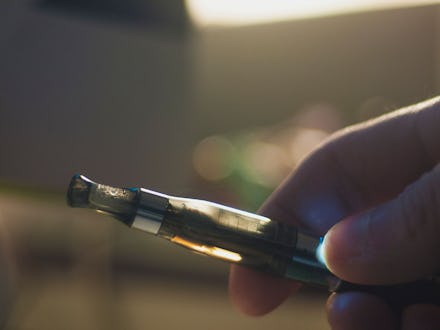Is vaping safe if I do it once in a while? An expert weighs in

A second death from a severe lung disease potentially linked to vaping was reported in Oregon on September 4, less than two weeks after the report of a death in Illinois due to a similar condition. While these are extreme cases that need to be further studied, the deaths emerge amid 193 possible cases of a bewildering “vaping illness” that, the Centers for Disease Control and Prevention announced, had been reported by 22 states between June 28 and August 20. These alarming reports add to growing evidence that e-cigarettes aren’t as “safe” or “clean” as their marketing often claims. But as with any vice, like sweets or alcohol, is it possible to vape safely, or in moderation? The short answer: It’s complicated.
Many scientists believe in a continuum of smoking, with regular tobacco cigarettes as the most dangerous option, and no cigarettes —regular or electronic — as the safest, says Holly Middlekauff, a cardiologist at Ronald Reagan UCLA Medical Center who researches e-cigarette use. She says that E-cigarettes fall somewhere in the middle, as far as overall safety. “A lot of people in the public health sector believe they are safer than tobacco cigarettes,” Middlekauff tells Mic, “but they’re not harmless.”
Vapes emit lower levels of the toxins found in regular cigarettes. On the other hand, they also contain heavy metals and other dangerous substances that are absent in regular cigarettes. What’s more, there’s no known safe amount of vaping, and certainly no known threshold for developing the lung illness that has sickened e-cig users, Middlekauff says.
While the CDC advises non-smokers not to vape, the agency notes that e-cigarettes that contain nicotine “have the potential” to help smokers curb and phase out regular cigarettes. Middlekauff points to a recent clinical trial that randomly assigned smokers to e-cigs plus counseling or traditional nicotine-replacement products (such as gum or patches) plus counseling. A year later, 18% of the smokers who had received e-cigs had quit cigarettes, versus 9.9% of those who had received nicotine-replacement products — but 80% of people in the e-cig group were still vaping, while only 9% of those in the other group were still using nicotine-replacement products. And as the researchers note, the long-term effects of vaping remain unknown.
Overall, the research on whether e-cigs can help people quit smoking is still “inconclusive,” per the CDC, and the Food and Drug Administration hasn’t approved them as a quitting aid.
Ideally, people who want to use e-cigarettes to help them quit smoking would completely cut out regular cigarettes and stay on e-cigs only briefly, Middlekauff says. The problem is, no one knows how short that transitional vaping period should be.
If you’re a former smoker using e-cigs to help you quit — or if you already vape and are wondering if your habit is dangerous — Middlekauff notes that you can take steps to minimize harm.
First things first: Buy e-cigs only from recognizable, commercially available brands, which are more likely to manufacture their products responsibly. Using reputable brands may also safeguard against the “shoddy workmanship” Middlekauff suspects to be responsible for the heavy metals detected in vape clouds, as well as battery explosions, which are rare but can cause serious injury. (The FDA offers tips on how to avoid these explosions, such as purchasing vapes with vent holes and other safety features, and not charging them overnight.)
Middlekauff also cautions against using e-cigs that contain cannabis. Since cannabis products don’t fall under FDA regulation, they don’t need to be tested to ensure that their content matches the ingredients on the label. We know so little about what’s in e-cigs — “we know even less about what’s in cannabis products.” Cannabis only adds another layer of uncertainty to vaping.
Some older models of e-cigarettes allow you to modify the battery voltage so you can set the device temperature. High voltages (5V) have been associated with the formation of more potentially cancer-causing formaldehyde, or formaldehyde-containing compounds, than even tobacco cigarettes generate. If you own one of these devices, “definitely don’t crank it up to a super high temperature,” Middlekauff says (although she notes that the findings have drawn skepticism among e-cig users, who say that vaping at such high temperatures results in an unpleasant taste).
The best-case scenario is to avoid vaping altogether, but we’re human so that's not the most realistic goal for some of us. When it comes to e-cigarettes, harm-reduction is our best bet.